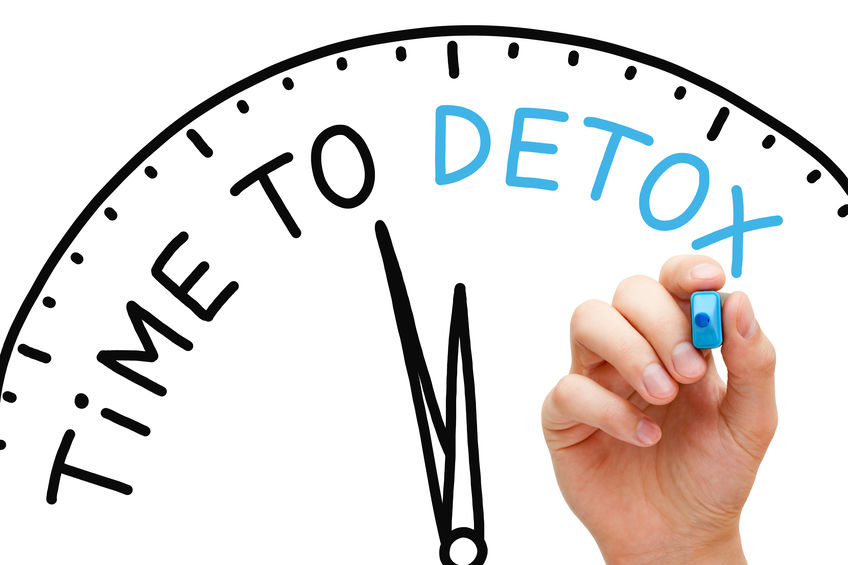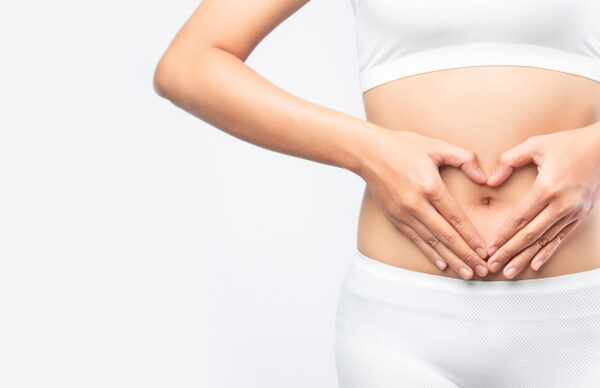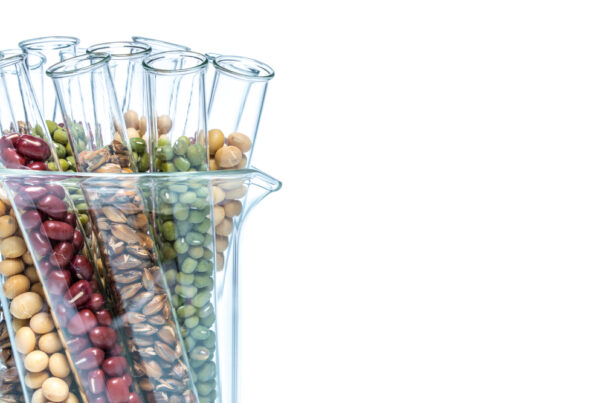What is Lifestyle Detox and Why is it so Important?
I don’t think I need to convince anyone that we all are exposed to an extraordinary amount of chemicals. While we may not be able to control the exposure, we certainly can control the quantity.
Changing your buying habits by only purchasing products with low chemical load will convince companies to start producing more products in line with consumer demand. After all, that’s what companies do – create products that people want to buy.
If there isn’t any money to be made, they wouldn’t have any reason to make or sell it.
So why did I decide to write this article? Because these are the questions I get asked:
- Why do I get sick on these chemicals and others don’t?
- How long will I have to detox for?
- How long is a piece of string?…(No, not really this one.)
First, there’s many ways we can get into contact with toxins in our environment:
HOW DO WE GET EXPOSED
- Air (breathing and smell)
- Skin (absorption)
- Ingesting (drinking, eating)
- Implanted or injected (vaccinations, drugs, amalgam fillings)
BODY BURDEN
“Why can’t I get rid of chemicals or metals?”
Our bodies are designed to remove these toxins within reason. But I’m sorry to say that we’ve moved way beyond that point already. It makes sense that your body cannot remove toxins if continually exposed to them, right? It’s a bit like leaving the tap water on in the bathtub. Even though some of the water will drain down the pipe, if the water doesn’t stop it will start to fill up the bathtub as it cannot drain fast enough.
Now let’s forget about the actual chemical load for a second and look at the biochemical effect these chemicals have on cellular function. Even minute quantities of metals such as mercury, lead, arsenic and cadmium, and chemicals such as PCB’s, dioxins, POPs (just to name a few) have been shown to change genetic expression, block enzyme function and slow down many detoxification pathways. That’s like putting the plug in, leaving the water with nowhere to go but fill up the bathtub.
This is how a body burden is created. The toxicants are entering faster than they can leave and as a consequence they slow everything down even further which makes them accumulate even faster. Another factor that amplifies this accumulation of toxins is stress:
STRESS AND THE SHIFT AWAY FROM DETOXIFICATION
I include mental, physical and emotional stress in this category. It can be the stress from a job you hate, money problems, lack of sleep, exercising too much or too little, lack of nutrients from a bad diet…just living in the 21st century really. Stress shifts your Autonomic Nervous System (ANS) into sympathetic mode. If stress is an overwhelming part of your day and your life, then this will be the dominant nervous system response. Why does this matter?
Sympathetic dominance comes at the expense of the parasympathetic response. Your autonomic nervous system only has these two pathways to choose from – either sympathetic (fight-or-flight) or parasympathetic (resting-and-digesting). The parasympathetic nervous system is responsible for detoxification and repair. It’s pretty clear that if your body function is shifted away from this parasympathetic response then you will not be making use of your body’s own detoxification system and ‘normal’ levels of toxins will start to accumulate. Eventually this slows down liver function to the extend that it becomes a systemic problem irrespective of the autonomic nervous system.
Not only is it the lack of parasympathetic activity that is involved here, but also the excess of sympathetic activity. The sympathetic nervous system is responsible for excess cortisol and glutamate production which is toxic to cells and interferes with their normal function. Cell membranes, receptors and transporters are damaged, pH levels shift, genes and enzyme are switched off, and cells can’t perform their internal detoxification as they should.
CHEMOPROTECTIVE SYSTEM
This is our own bodies protective system against toxins in our environment. By improving this system we will protect our bodies from accumulating these toxins and at the same time excrete them more effectively. Infections can really affect how well you naturally detoxify. By definition infections and the inflammation that goes with it is the exact polar opposite of detoxification.
Inflammation is PRO-oxidant and detoxification is ANTI-oxidant. You cannot remove toxins from your body effectively if you have infections working against it. So do you suffer form chronic infections like glandular fever, herpes virus, candida yeast infections? This may favour toxin accumulation in your body.
DETOX IS A WAY OF LIFE
“How long do I have to detox for?” Unless you live on a remote island away from pollution and human civilization, the answer is…THE REST OF YOUR LIFE.
Before everyone runs out to the supermarket to get the latest 24 hour detox product, this is not what I’m talking about, but rather a lifestyle of detoxification. It’s a sad reality that the industrial revolution has completely changed our genetic expression and created a toxic burden that even affect newborn babies with over 100+ chemicals found just in the umbilical cord blood of the average newborn in western countries. In some cord samples they even found as many as 250+ different chemicals. We’ll never escape toxicants and we’ll never stop detoxifiying, that’s just the reality. For the average person with healthy genetic expression this just means doing the healthy things that everyone should be doing anyway – eat organic food where possible, avoid chemicals in household products, drink clean filtered water, exercise to mobilize and sweat out chemicals, etc. Nothing fancy. Just the same things humans have been doing for millions of years before we started messing with our environment.
The average western diet and lifestyle is NOT normal. It is not normal to eat fast food, junk food, huge amounts of sugar and grains, not exercise, not eat vegetables or eat vegetables with chemical sprays on them. It is not normal to put chemicals on your body, spray it in the air and breath it in, put chemicals in your water and drink it, ingest chemicals in the form of drugs (prescription or not), excessive alcohol or smoking. We’ve made it normal in the last 50+ years or so, but this does not change the human physiology and our ability to cope with all this stuff.
There’s plenty of things you can do to keep your detoxification pathways open and naturally eliminate chemicals you are exposed to in daily life:
EXERCISE AND SWEATING
Anything that raises your temperature and makes you sweat is going to moblize toxins and remove them out through the skin. This includes:
- Exercise (you know, that thing that we all have to do but don’t really like doing)
- Working in the garden (this certainly gets me sweating)
- Sauna (for those who can afford it)
- Hot yoga
- Anything that makes you sweat (if you don’t sweat there are reasons for this as well)
Exercise is very effective at removing some solvents according to a study done in Canada. Solvents are persistent lipohilic chemicals that are very hard to excrete, but this study showed solvents coming out in the breath within minutes of exercising, and still continued for a while after exercise. Not all chemicals can be detoxified this way, so don’t rely solely on this method.
FASTING
This is probably one of the most effective ways of mobilizing and dumping toxins. In terms of VOC’s (Volatile Organic Compounds) it is the only way (as far as I’m aware at the time of writing) to get them out of the body. This could be anything from a full fast to intermittent fasting, so read Facts on Fasting and the Numerous Health Benefits to learn more about this.
FOOD AS MEDICINE
Certain foods have a chelating effect and can actually move metals out of the body. Other foods are needed for the body’s internal detoxification system to work optimally:
- Garlic – lead (other metals have not been tested, but it could likely remove others as well)
- Chlorella – be careful of the source as many are contaminated with metals themselves. Choose sources grown in clean ponds rather than from the ocean.
- Pectin – metals but also radioactive elements
- Fermented foods – sauerkraut, kefir, yoghurt, miso, tempeh, kombucha, tofu, nato, etc. Has to be properly made, organic, non-pasteurized without preservatives or vinegar otherwise it won’t contain the probiotics needed for detoxification.
- Sulfur foods – broccoli, cabbage, brussel sprouts, cauliflower, cruciferous vegetables. These are rich sources of cysteine needed for glutathione production (our major detoxification antioxidant) as well as other detoxifying substances.
- Herbs and spices – turmeric, rosemary, parsley, coriander, etc. all contain different detoxifying nutrients.
- Fibre – vegetables sources, flaxseed meal, slippery elm, etc. is needed to excrete toxins from the digestive system.
- Healthy organic fats – supports bile production and binds to toxins to be excreted into the bowel which is then removed with fibre.
- Lactobacillus rhamnosus found in yoghurt – lead
- Lactobacillus plantarum found in sauerkraut – cadmium
Check out the Dirty Dozen and Clean Fifteen to minimize toxin exposure from food intake.
FEED YOUR MICROBIOME
So as you can see certain bacterial species (L. rhamnosus, L. plantarum) have already been identified in studies to have chelating effects on metals. These are just the ones studied. It’s almost a certainty that other species will also be effective in detoxification either in general or targeting specific toxins.
Read more about The Microbiome: Our Forgotten Organ.
Apart from specific chelating effects you also need healthy digestion as part of phase 3 detoxification and eliminating toxins from the bowel. If you are constipated toxins will just get reabsorbed right back into your system often making you feel sicker than before.
Often chemical exposure and metals are the reason the microbiome may not be as healthy as it should be in the first place. Chlorine (water, swimming pools) and pesticides (non-organic foods) are designed to kill bacteria, so it will do just that in your gut. This takes us back to the subject under BODY BURDEN where these chemicals through its affect on gut organisms will slow down detoxification even further, contributing to accumulation of toxins in your body.
ALKALIZE AND BALANCE YOUR PH
This sounds like such a basic and outdated concept, but I’m going to illustrate how important this is.
Most enzymes in your body function optimally at certain pH levels. Without getting into the details of them all, it’s pretty much close to a neutral pH of 7 (give or take a little). So yes, we get blood pH which will always be stable, because if it wasn’t you would be dead. But blood pH levels will often remain stable at the expensive of tissue and cellular pH. These are the areas the will suffer the most. So if your cellular pH is more acidic, what’s going to happen to the cellular enzymes that are responsible for detoxifying those cells? They’re going to either work slower or shut down, depending on the level of acidity and other factors. If your detoxification enzymes are not working properly then you won’t be able to eliminate even the basic toxins we all are exposed to, but instead they will start to accumulate.
Your body will also start to pull calcium from other areas, such as the bones, in order to balance pH levels in the blood. This brings in itself another set of problems.
The Importance of Calcium in Mitochondrial Function and Regeneration
TO SUMMARISE…
In order to keep chemicals moving out of your body you need to:
- Remove as many of them from your environment as possible – food, household products, personal care products, work exposure, etc.
- Eat clean food and drink clean water to provide nutrients, hydration, alkalizing minerals and fibre to move these things out.
- Eat less
- Exercise more
That’s it. Pretty basic stuff.
This will work for most people with healthy genetic expression and no real health problems who just want to be as healthy as possible, or who may want to prepare for pregnancy (this is not a preconception program but just another example of where this would be recommended).
For those with health issues, heavy body burden of chemicals and certain genetic polymorphisms it may not be as easy as just doing this. They should seek the advice of someone who understands the relationship between chemical/metal exposure and body dysfunction, who can help them safely eliminate these and restore cellular function.
References:
Jandacek RJ, Tso P. Enterohepatic circulation of organochlorine compounds: a site for nutritional intervention. J Nutr Biochem 2007;18:163–7.
Andersen ME, et al. modeling of saturable, renal resorption of perfluoroalkylacids in monkeys – probing the determinants of long plasma half-lives. Toxicology 2006;227:156–64.
Environmental Working Group. Body burden – the pollution in newborns A benchmark investigation of industrial chemicals, pollutants and pesticides in umbilical cord blood. (Executive Summary) July 14, 2005. [Accessed Sept 16, 2005] http//ewg.org/reports/bodyburden2/execsumm.php
Ursell LK, Knight R . Xenobiotic and the human gut microbiome: metatranscriptonics reveal the active players.. Cell Metab. 2013 Mar 5;17(3):317-8
Breton J, Massart S, Vandamme P, De Brandt E, Pot B, Foligne B. Ecotoxicology inside the gut: impact of heavy metals on the mouse microbiome. BMC Pharmacol Toxicol 2013;14:62.
Microbiome/Environment Interactions. National Institute of Environmental Health Sciences Division of Extramural Research and Training Cellular, Organs and Systems Pathobiology Branch. NATIONAL ADVISORY ENVIRONMENTAL HEALTH SCIENCES COUNCIL http://www.niehs.nih.gov/news/newsletter/2012/3/spotlight-council/ file62863.pdf [LOE-B]
Samsel et al. Glyphosate’s Suppression of Cytochrome P450 Enzymes and Amino Acid Biosynthesis by the Gut Microbiome: Pathways to Modern Diseases Entropy 2013, 15(4), 1416-1463
Elimination of persistent toxicants from the human body
Human excretion of bisphenol A: blood, urine, and sweat (BUS) study.
Human Elimination of Phthalate Compounds: Blood, Urine, and Sweat (BUS) Study






